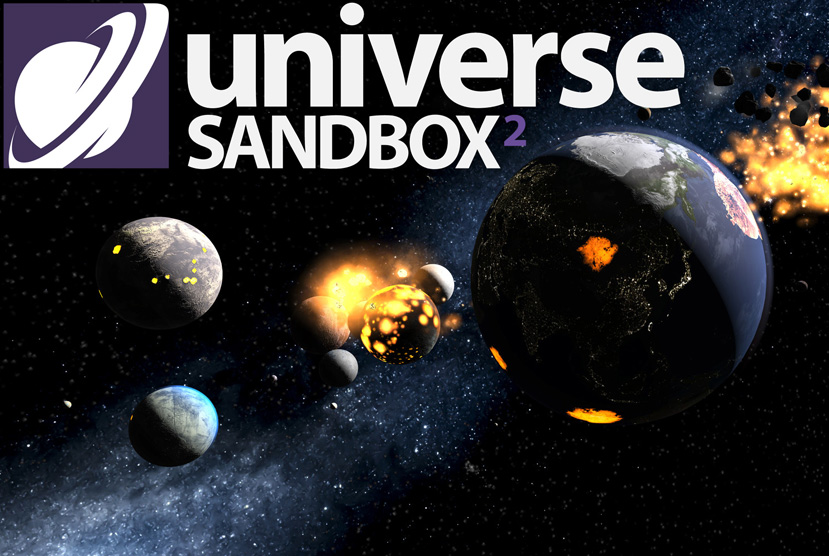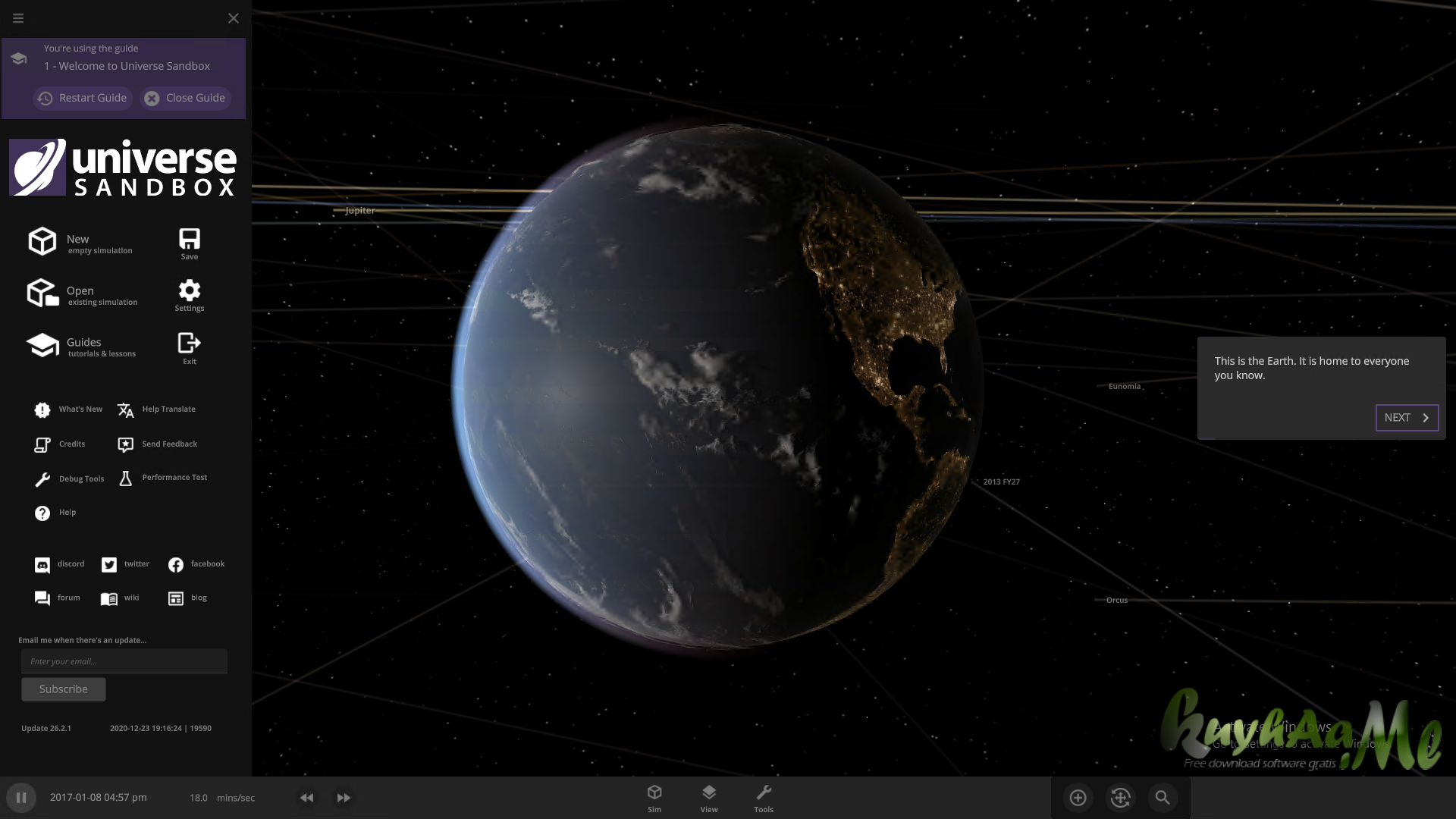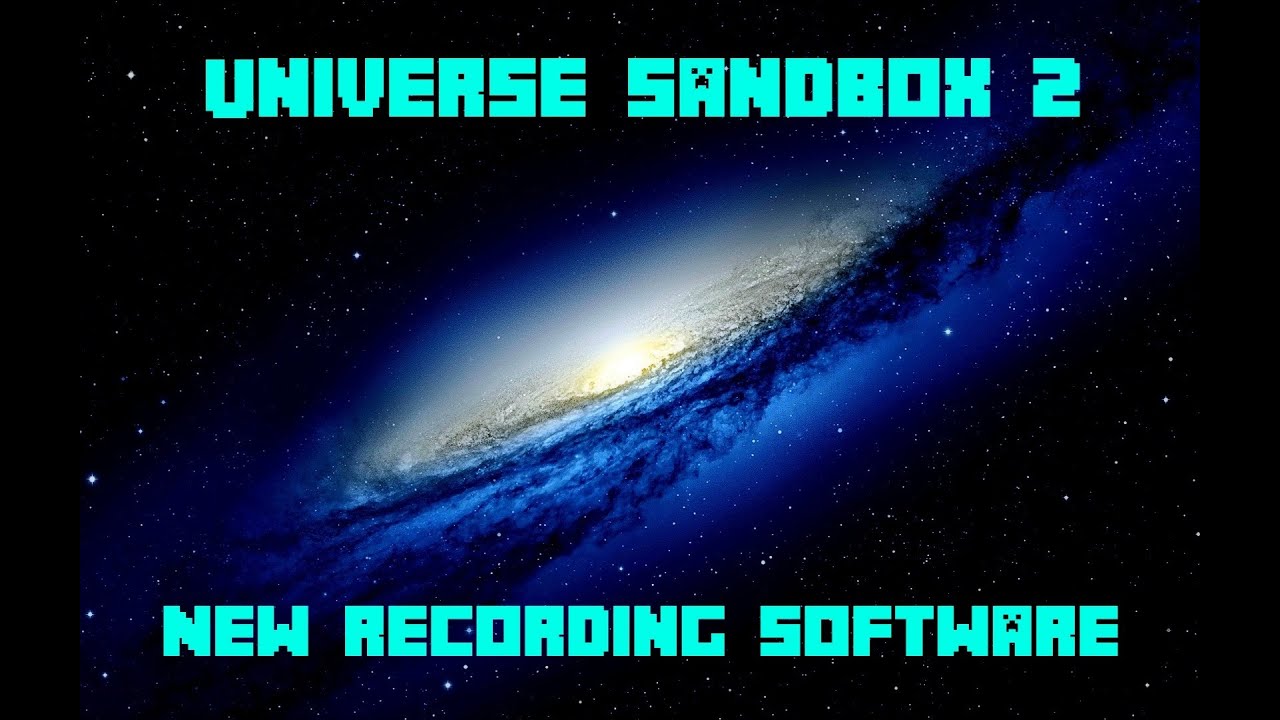With universe sandbox 2 software at the forefront, embark on a journey into a world where creativity and exploration collide, offering a unique experience unlike any other.
Universe Sandbox 2 allows users to simulate and customize various scenarios in space, making it a powerful tool for both learning and entertainment.
Introduction to Universe Sandbox 2 Software
Universe Sandbox 2 is a simulation software that allows users to create, interact with, and explore realistic simulations of our universe and celestial bodies. Users can manipulate various parameters such as gravity, mass, velocity, and more to see how these changes affect the behavior of planets, stars, moons, and other objects in space.
Key Features of Universe Sandbox 2
- Realistic Simulation: Universe Sandbox 2 provides an accurate simulation of the laws of physics, allowing users to experiment with different scenarios and observe the outcomes.
- Customization: Users can customize simulations by adjusting properties of celestial bodies, creating new objects, and even designing their own solar systems.
- Educational Tool: With its detailed simulations, Universe Sandbox 2 serves as an educational tool for students, teachers, and space enthusiasts to learn about astronomy and physics concepts.
- VR Support: The software offers virtual reality support, allowing users to immerse themselves in the universe they create.
Target Audience for Universe Sandbox 2
Universe Sandbox 2 caters to a wide range of audiences, including students, educators, astronomers, and anyone with an interest in space exploration and simulation. It is suitable for both beginners looking to learn about the universe and advanced users wanting to conduct complex experiments and simulations.
System Requirements and Installation

To enjoy the full features of Universe Sandbox 2, it is important to ensure that your system meets the minimum requirements. Below, you will find details on the system requirements as well as step-by-step instructions on how to install Universe Sandbox 2 on different operating systems.
Minimum System Requirements
- OS: Windows 7 SP1+ (64-bit) or macOS 10.12+
- Processor: 1.6GHz dual-core
- Memory: 2 GB RAM
- Graphics: 512 MB Video Memory, Shader Model 4.0
- DirectX: Version 11
- Storage: 2 GB available space
Recommended System Requirements
- OS: Windows 10 (64-bit) or macOS 10.14+
- Processor: 2.6GHz quad-core
- Memory: 4 GB RAM
- Graphics: 1 GB Video Memory, Shader Model 5.0
- DirectX: Version 11
- Storage: 4 GB available space
Installation Steps for Windows
- Download the Universe Sandbox 2 installer from the official website.
- Run the installer and follow the on-screen instructions.
- Once installed, launch the application and start exploring the universe!
Installation Steps for macOS
- Download the Universe Sandbox 2.dmg file from the official website.
- Open the .dmg file and drag the Universe Sandbox 2 application to your Applications folder.
- Launch the application from your Applications folder and begin your cosmic journey!
Optimizing Performance
To optimize performance based on your system specifications, consider the following tips:
- Update your graphics drivers to the latest version.
- Close any unnecessary background applications while running Universe Sandbox 2.
- Adjust the graphics settings within the game to find the right balance between performance and visual quality.
- Regularly check for software updates to ensure you have the latest features and improvements.
User Interface and Navigation
The user interface in Universe Sandbox 2 is designed to provide a seamless experience for users to explore and interact with simulations of the universe.
Layout of the User Interface
The user interface consists of various panels and controls that allow users to manipulate objects, change settings, and observe the behavior of celestial bodies. The main components include the control panel, simulation view, object properties panel, and toolbar.
- The control panel contains options for creating new simulations, adjusting simulation settings, and accessing help resources.
- The simulation view is where users can observe the simulation in real-time, zoom in/out, and rotate the camera to view different angles.
- The object properties panel displays detailed information about selected objects, such as mass, velocity, and composition.
- The toolbar provides quick access to common tools and controls, such as adding objects, adjusting time settings, and changing camera modes.
Navigation and Interaction
Users can navigate the simulation by using the mouse and keyboard to control the camera movement, zoom level, and object selection. The following are some common tools and controls available for users to interact with simulations:
- Camera Controls: Users can rotate the camera by holding the right mouse button, zoom in/out with the scroll wheel, and pan by holding the middle mouse button.
- Object Selection: Clicking on an object in the simulation view allows users to select and view its properties in the object properties panel.
- Time Controls: Users can adjust the simulation time, pause/play the simulation, and increase/decrease the simulation speed using the controls in the toolbar.
- Object Manipulation: Tools like the Add tool, Move tool, and Scale tool enable users to add new objects, move existing objects, and resize objects within the simulation.
Simulation Capabilities and Customization
Creating simulations in Universe Sandbox 2 offers a wide range of possibilities for users to explore and experiment with different scenarios. The software allows for customization options that enable users to tweak various parameters and settings to create both realistic and imaginative simulations.
Range of Simulations
Universe Sandbox 2 allows users to simulate a variety of celestial bodies, including planets, moons, asteroids, and comets. Users can also create simulations of entire solar systems, galaxies, and even black holes. The software provides a realistic physics engine that accurately models the interactions between different objects, resulting in dynamic and visually stunning simulations.
- Simulate the formation of a new solar system
- Collide two galaxies to observe the resulting interactions
- Create a scenario where a comet impacts a planet
Customization Options, Universe sandbox 2 software
Users have the ability to customize various aspects of their simulations in Universe Sandbox 2. This includes adjusting parameters such as mass, velocity, temperature, and composition of celestial bodies. Additionally, users can change environmental factors like gravity, atmospheric conditions, and orbital paths to create unique and personalized simulations.
- Change the mass and size of a planet to see how it affects its orbit
- Adjust the temperature of a star to observe changes in its luminosity
- Create custom scenarios by setting specific initial conditions for objects
Tips for Creating Realistic and Imaginative Simulations
To make the most out of Universe Sandbox 2, here are some tips for creating simulations that are both realistic and imaginative:
- Research the properties and characteristics of celestial bodies before creating simulations involving them
- Experiment with different parameters and settings to see how they impact the outcome of the simulation
- Combine scientific knowledge with creativity to come up with unique and engaging scenarios
Educational and Scientific Applications

Universe Sandbox 2 is not only a fun simulation game but also a valuable tool in educational and scientific settings. Its realistic physics engine and accurate astronomical data make it an excellent platform for teaching and research.
Teaching Physics and Astronomy
Universe Sandbox 2 is widely used in classrooms to help students visualize and understand complex physics concepts. By manipulating variables and observing the effects in real-time, students can grasp fundamental principles of physics, such as gravity, orbits, and collisions. In astronomy, the software allows educators to demonstrate celestial phenomena, planetary motion, and the formation of galaxies in an interactive and engaging way.
- Students can experiment with different scenarios, such as changing the mass of a star or altering the orbit of a planet, to see how these changes affect the overall system.
- Teachers can create custom simulations to illustrate specific scientific principles or historical events, enhancing the learning experience for students.
Scientific Accuracy of Simulations
The simulations in Universe Sandbox 2 are based on real scientific data and models, ensuring a high level of accuracy. Astronomical objects in the software behave according to the laws of physics, allowing researchers and educators to simulate and study complex phenomena with precision.
Researchers can use Universe Sandbox 2 to test hypotheses, simulate astronomical events, and explore the dynamics of celestial bodies in a controlled virtual environment.
- The software provides a platform for conducting virtual experiments and observing the outcomes without the constraints of the physical world.
- Scientists can validate their theories, conduct comparative studies, and analyze the behavior of astronomical objects under different conditions, leading to new discoveries and insights.
Research and Discoveries
Universe Sandbox 2 has been instrumental in aiding research and facilitating discoveries in the field of astronomy and astrophysics. Scientists and astronomers have used the software to model complex systems, simulate astronomical events, and investigate the dynamics of galaxies, stars, and planets.
- By running simulations in Universe Sandbox 2, researchers have gained valuable insights into the formation of planetary systems, the evolution of galaxies, and the interactions between celestial bodies.
- The software has contributed to the discovery of new exoplanets, the study of gravitational interactions, and the exploration of theoretical astrophysical concepts.
Community and Sharing: Universe Sandbox 2 Software
Engaging with the Universe Sandbox 2 community allows users to connect with fellow enthusiasts, share knowledge, and collaborate on exciting projects.
Engagement with the Community
Users can interact with the Universe Sandbox 2 community through various channels, such as forums, social media platforms, and online events. These platforms provide spaces for discussions, sharing of ideas, and seeking help from experienced users.
Sharing Simulations
Sharing simulations in Universe Sandbox 2 is a straightforward process. Users can save their simulations and upload them to the official Universe Sandbox 2 website or share them directly with other users. This sharing feature enables the exchange of creative ideas and promotes learning through exploration of different simulations.
Benefits of Collaboration
- Collaborating with others in the Universe Sandbox 2 community opens up opportunities to learn new simulation techniques and discover innovative ways to explore the universe.
- Sharing simulations with fellow users can lead to constructive feedback, suggestions for improvement, and inspiration for new projects.
- Through collaboration, users can work together on complex simulations, conduct experiments, and collectively deepen their understanding of astronomical phenomena.
- Building a network within the community can foster a sense of belonging, support, and motivation to continue exploring the vast possibilities of Universe Sandbox 2.
Final Summary

Delve into the endless possibilities of Universe Sandbox 2, whether for educational purposes, scientific exploration, or simply unleashing your creativity in the vast expanse of the universe.
